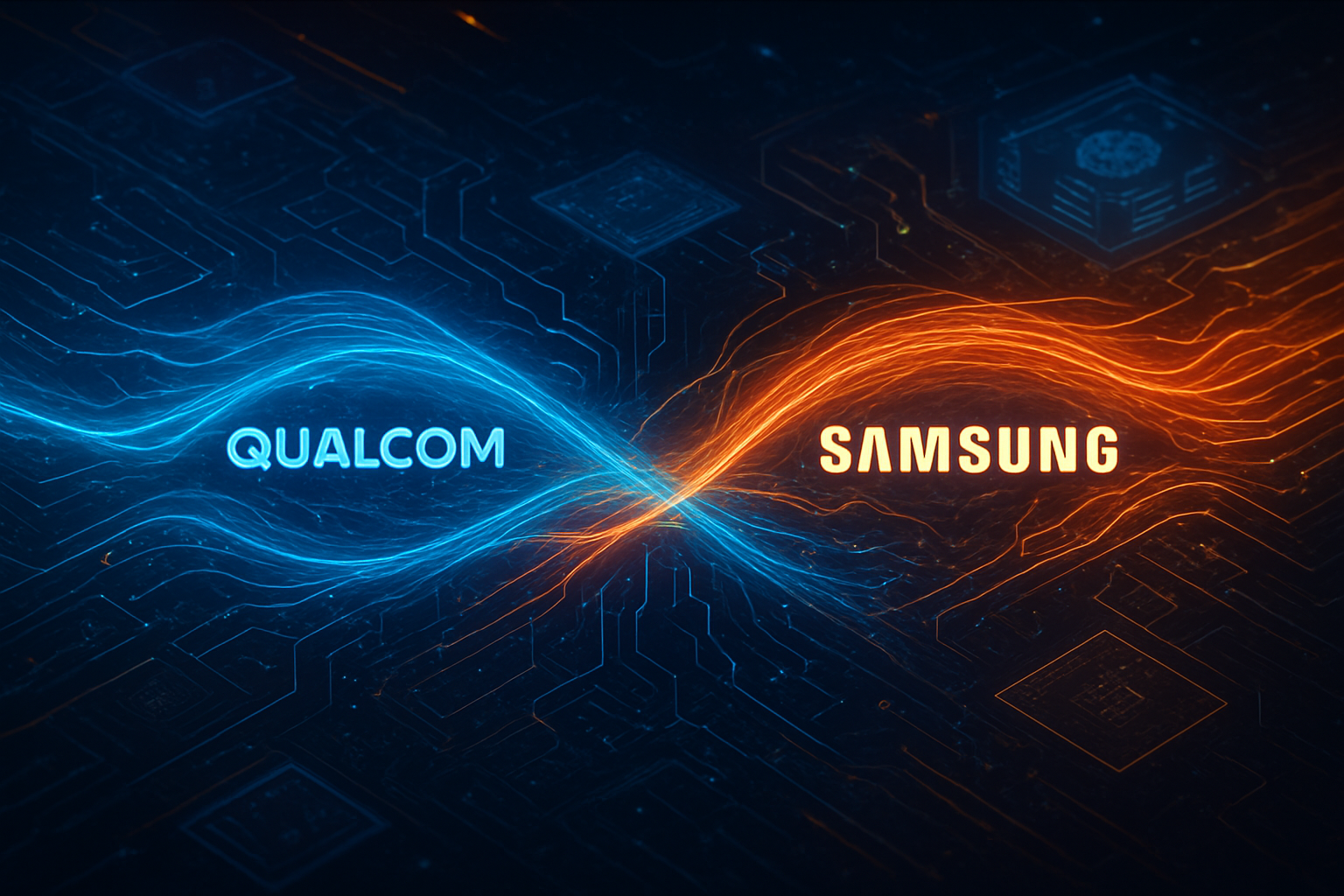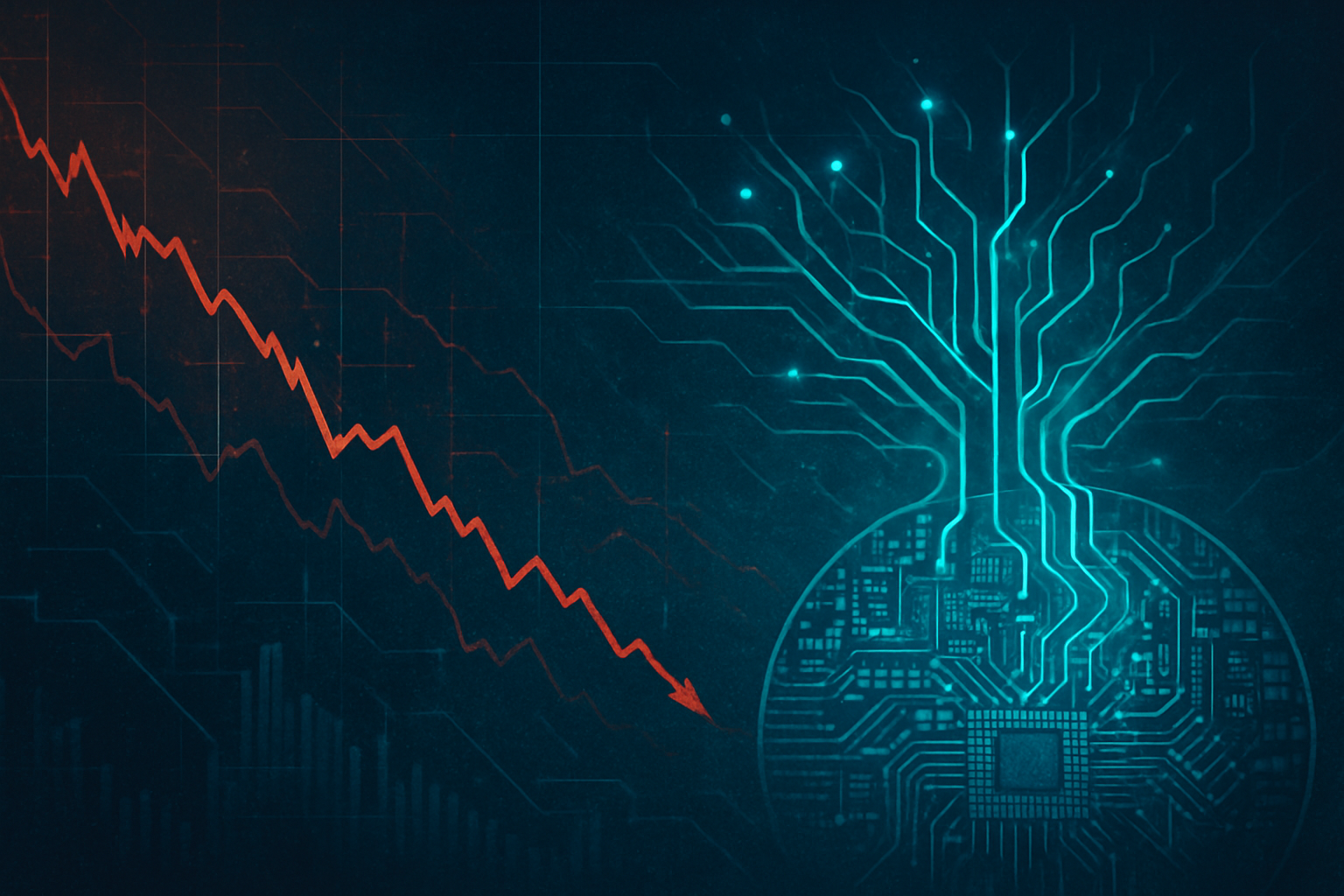Alpha and Omega Semiconductor (NASDAQ: AOSL) experienced a significant setback yesterday, November 6, 2025, as B. Riley Securities downgraded the company's stock from a "Buy" to a "Neutral" rating. This move signals a potential shift in market sentiment and raises questions about the company's near-term trajectory within the highly competitive semiconductor industry. The downgrade was accompanied by a steep reduction in the price target, from $40 to $24, reflecting growing concerns over the company's recent financial performance and future outlook.
The analyst action comes on the heels of Alpha and Omega Semiconductor's mixed fiscal first-quarter results and a materially below-consensus forecast for the second fiscal quarter of 2026. A primary driver behind B. Riley's cautious stance is the disappointing performance within AOSL's crucial Compute segment, which reportedly suffered from an "AI driver push-out" and reduced volume. This development, coupled with missed gross margin expectations and a return to negative earnings per share (EPS), has cast a shadow over the company's profitability prospects, with concerns that this trend could persist well into the second half of fiscal year 2026.
Deep Dive into the Downgrade: Technical Glitches and Market Realities
The analyst downgrade by B. Riley Securities offers a granular look into the challenges currently facing Alpha and Omega Semiconductor (NASDAQ: AOSL). At the heart of the revised outlook is the significant underperformance of the company's Compute segment. This segment, critical for power management solutions in various computing applications, including those leveraging artificial intelligence, has evidently not met expectations. The specific mention of an "AI driver push-out" is particularly telling. This likely refers to delays in the adoption or production ramp-up of AI-specific components or systems that AOSL was expected to supply, indicating either technical hurdles, customer-side delays, or a slowdown in the broader AI hardware market than previously anticipated.
Technically, AOSL specializes in power semiconductors, including power MOSFETs, ICs, and diodes, which are essential components for efficient power conversion and management in a wide array of electronic devices, from consumer electronics to data centers and automotive applications. The missed gross margins suggest either pricing pressures in their competitive markets, higher-than-expected production costs, or an unfavorable product mix during the quarter. When compared to previous quarters where the company might have benefited from strong demand in specific segments, the current situation indicates a deviation from expected operational efficiency and market capture. The return to negative EPS further underscores operational challenges, implying that revenue generation is not sufficient to cover costs, leading to a "challenged stock catalyst profile" that analysts believe will extend well into the first half of 2026.
This scenario differs from previous growth narratives where companies like AOSL were expected to capitalize on the burgeoning demand for AI infrastructure. While many semiconductor firms have seen a boost from the AI boom, AOSL's experience suggests that not all segments or companies within the ecosystem are benefiting equally or on the same timeline. The "AI driver push-out" implies that the ramp-up for certain AI-related components might be more staggered or delayed than initially projected, impacting suppliers who were banking on immediate volume increases. Initial reactions from the broader semiconductor community, while not explicitly stated, would likely reflect a cautious re-evaluation of the AI market's immediate impact on specific niche players.
Ripple Effects Across the Semiconductor Landscape
The downgrade of Alpha and Omega Semiconductor (NASDAQ: AOSL) carries significant implications, not just for the company itself, but also for the broader semiconductor industry, particularly those players heavily invested in or banking on the AI boom. Companies with diverse product portfolios and less reliance on a single, albeit promising, growth vector like "AI drivers" might stand to benefit from a perception of greater stability. Conversely, smaller, more specialized semiconductor firms that have bet heavily on the immediate and rapid acceleration of AI hardware deployment could face increased scrutiny and potentially similar analyst downgrades if the "AI push-out" trend becomes more widespread.
This development could intensify competitive pressures among major AI labs and tech companies. If the supply chain for certain AI components faces delays or if the cost structures for these components become less favorable, it could impact the timelines and profitability of developing and deploying new AI solutions. For tech giants like NVIDIA (NASDAQ: NVDA), Advanced Micro Devices (NASDAQ: AMD), and Intel (NASDAQ: INTC), who are deeply entrenched in the AI hardware space, such issues could prompt a re-evaluation of their supplier relationships and potentially lead to a consolidation of orders with more robust and diversified partners. Startups relying on cutting-edge, specialized components might find their innovation cycles affected by supply chain uncertainties or increased component costs.
The "AI driver push-out" could disrupt existing product roadmaps and services across the tech ecosystem. Companies that had planned product launches or service expansions contingent on the immediate availability and performance of certain AI-enabling semiconductors might need to adjust their strategies. This situation could also lead to a strategic advantage for companies that have either diversified their supply chains or developed proprietary solutions that are less susceptible to external component delays. Market positioning will become even more critical, with companies demonstrating resilience and adaptability in their supply chains and product development likely gaining an edge over competitors facing similar component-related headwinds.
Wider Significance: A Reality Check for the AI Hype Cycle
The downgrade of Alpha and Omega Semiconductor (NASDAQ: AOSL) serves as a potent reminder that even within the red-hot artificial intelligence sector, growth is not always linear or without its challenges. This event fits into the broader AI landscape as a "reality check" against the often-unbridled optimism surrounding AI's immediate impact on every segment of the tech industry. While the long-term trajectory for AI remains overwhelmingly positive, the "AI driver push-out" specifically highlights that the integration and mass deployment of AI hardware can encounter unforeseen delays, whether due to technical complexities, market readiness, or economic factors.
The impacts of such a delay extend beyond individual companies. It suggests that the demand for certain specialized AI components might be ramping up at a more measured pace than initially forecast by some analysts. This could lead to temporary oversupply in specific niches or a re-calibration of investment priorities within the semiconductor manufacturing sector. Potential concerns include a broader slowdown in capital expenditure by AI infrastructure developers if component availability or cost-effectiveness becomes an issue, potentially ripping through equipment suppliers and foundries. This situation contrasts with earlier AI milestones, such as the initial breakthroughs in deep learning or the rapid adoption of large language models, which often spurred immediate and widespread demand for high-performance computing hardware.
Comparing this to previous AI milestones, where breakthroughs often led to immediate surges in demand for underlying technologies, the AOSL situation points to the complexities of commercialization and scaling. It underscores that the path from technological innovation to widespread market adoption is rarely smooth, especially in capital-intensive industries like semiconductors. While the overall trend towards AI integration across industries is undeniable, this event highlights that specific market segments and product cycles can experience volatility, requiring a more nuanced understanding of the AI supply chain and its vulnerabilities.
The Road Ahead: Navigating AI's Evolving Demands
Looking ahead, the "AI driver push-out" experienced by Alpha and Omega Semiconductor (NASDAQ: AOSL) signals that the near-term landscape for certain AI-related hardware components may be more volatile than previously anticipated. In the near-term, we can expect increased scrutiny on other semiconductor companies with significant exposure to specialized AI components, with analysts likely re-evaluating their revenue and profitability forecasts. Companies may also pivot to diversify their product offerings or accelerate development in other, less AI-dependent segments to mitigate risks associated with potential delays.
Longer-term, the demand for AI-enabling semiconductors is still expected to grow substantially, driven by the proliferation of AI across various industries, from autonomous vehicles to advanced robotics and enterprise data centers. However, the current situation underscores the need for robust supply chain management and flexible manufacturing capabilities. Potential applications and use cases on the horizon will continue to drive innovation in power management and specialized processing units, but the timeline for widespread adoption might be more staggered. Challenges that need to be addressed include improving the efficiency and cost-effectiveness of AI hardware, ensuring resilient supply chains, and accurately forecasting market demand in a rapidly evolving technological landscape.
Experts predict that while the overall AI market will continue its upward trajectory, companies will need to demonstrate greater agility and strategic foresight. The "AI driver push-out" could lead to a period of consolidation or strategic partnerships as companies seek to strengthen their positions and mitigate risks. What happens next will largely depend on how quickly these "AI drivers" ultimately ramp up and whether the underlying issues are company-specific or indicative of broader industry trends. The coming months will be crucial in determining if this is an isolated blip for AOSL or a harbinger of more widespread adjustments in the AI hardware supply chain.
Wrap-Up: A Cautionary Tale in the AI Era
The analyst downgrade of Alpha and Omega Semiconductor (NASDAQ: AOSL) by B. Riley Securities serves as a critical reminder that even in the most promising technological revolutions, market dynamics are complex and subject to unforeseen shifts. Key takeaways from this event include the vulnerability of even well-positioned companies to supply chain disruptions or delays in key growth segments like AI, and the immediate impact of financial performance misses on investor confidence. The "AI driver push-out" specifically highlights that while the promise of AI is immense, its commercialization and the subsequent demand for underlying hardware can be subject to unpredictable timelines.
This development holds significant, albeit cautionary, importance in the history of AI's economic impact. It underscores that the path to widespread AI adoption is not a monolithic surge but a series of nuanced advancements and occasional setbacks. It challenges the notion that every company tangentially related to AI will experience immediate and exponential growth, prompting a more discerning view of investment opportunities within the sector. The long-term impact will likely be a more refined understanding of the AI supply chain, encouraging greater diversification and resilience among component manufacturers.
In the coming weeks and months, investors and industry observers should closely watch for updates from Alpha and Omega Semiconductor regarding their Compute segment and overall profitability. Furthermore, it will be important to monitor the broader semiconductor market for any signs that the "AI driver push-out" is a more widespread phenomenon affecting other players. The resilience of the AI market will be tested by how quickly such delays are resolved and how effectively companies adapt their strategies to navigate the evolving demands of this transformative technology.
This content is intended for informational purposes only and represents analysis of current AI developments.
TokenRing AI delivers enterprise-grade solutions for multi-agent AI workflow orchestration, AI-powered development tools, and seamless remote collaboration platforms.
For more information, visit https://www.tokenring.ai/.









